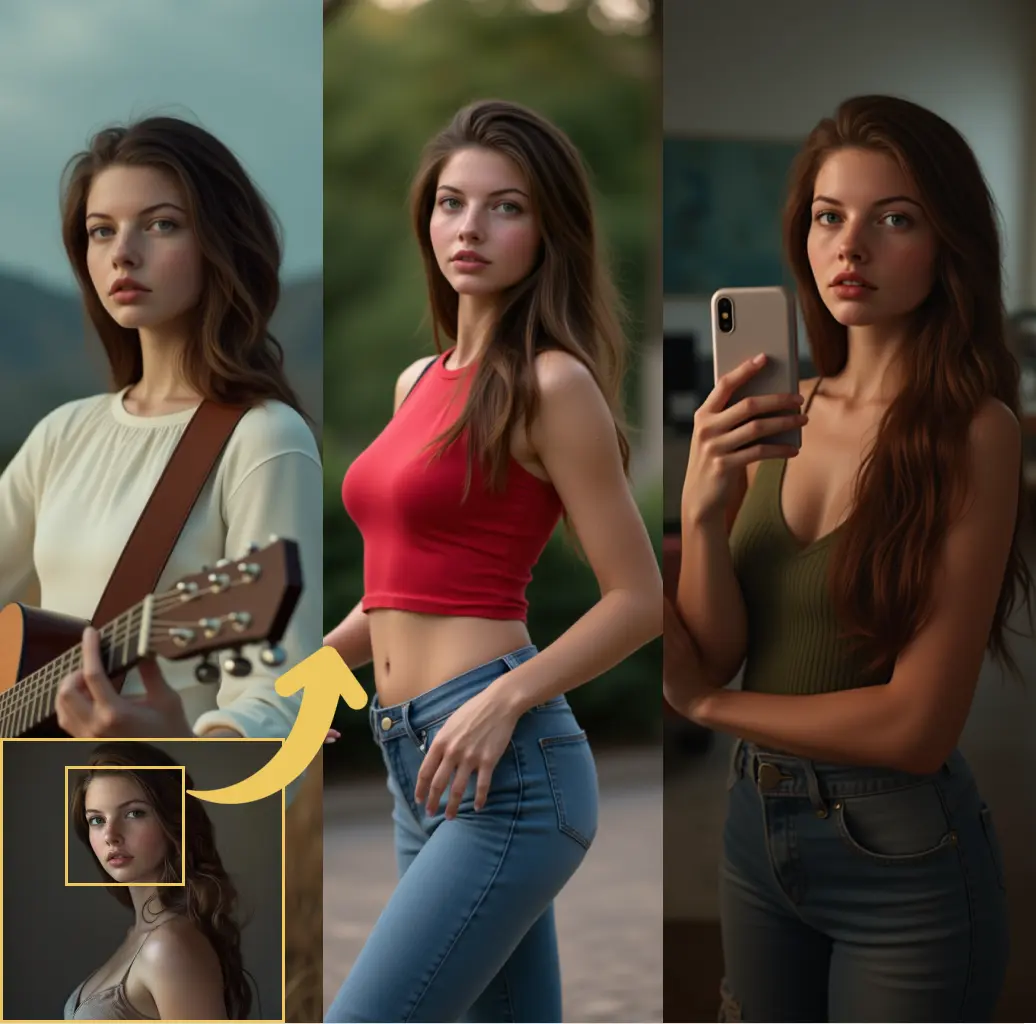ComfyUI Node: Exposure to HDR
exposure_to_hdr
CategoryDiffusionLight
kijai (Account age: 2467days) Extension
DiffusionLight implementation for ComfyUI Latest Updated
2024-05-21 Github Stars
0.07K
How to Install DiffusionLight implementation for ComfyUI
Install this extension via the ComfyUI Manager by searching for DiffusionLight implementation for ComfyUI- 1. Click the Manager button in the main menu
- 2. Select Custom Nodes Manager button
- 3. Enter DiffusionLight implementation for ComfyUI in the search bar
Visit ComfyUI Online for ready-to-use ComfyUI environment
- Free trial available
- 16GB VRAM to 80GB VRAM GPU machines
- 400+ preloaded models/nodes
- Freedom to upload custom models/nodes
- 200+ ready-to-run workflows
- 100% private workspace with up to 200GB storage
- Dedicated Support
Exposure to HDR Description
Converts multiple exposure images to HDR, enhancing dynamic range for detailed, realistic visuals.
Exposure to HDR:
The exposure_to_hdr node is designed to convert a series of images with different exposure levels into a single High Dynamic Range (HDR) image. This process enhances the dynamic range of the image, capturing more details in both the shadows and highlights. The node uses a sophisticated method to compute luminance for each image, blend them based on their exposure values, and then tonemap the resulting HDR image to a Low Dynamic Range (LDR) image for display purposes. This allows you to create visually stunning images that retain details across a wide range of lighting conditions, making it particularly useful for AI artists looking to enhance the realism and depth of their digital artwork.
Exposure to HDR Input Parameters:
images
This parameter expects a list of images with different exposure levels. Each image should be a tensor representing the pixel values. The images are processed to compute their luminance, which is then used to blend them into a single HDR image. The quality and range of the HDR image depend significantly on the variety and quality of the input images.
gamma
The gamma parameter is a numerical value that adjusts the gamma correction applied to the images. Gamma correction is used to control the overall brightness of the image. A higher gamma value will make the image appear brighter, while a lower value will make it darker. The default value is typically set to 2.2, which is standard for most displays, but it can be adjusted to suit specific artistic needs.
Exposure to HDR Output Parameters:
hdr_rgb
This output is the resulting HDR image represented as a tensor. The HDR image contains a higher dynamic range of luminance values, capturing more details in both the dark and bright areas of the image. This output is useful for further processing or for creating highly detailed and realistic images.
ldr_rgb
This output is the tonemapped LDR image, also represented as a tensor. The LDR image is suitable for display on standard screens and retains much of the detail from the HDR image. This output is particularly useful for final rendering and presentation purposes.
Exposure to HDR Usage Tips:
- Ensure that the input images cover a wide range of exposure levels to maximize the dynamic range of the resulting HDR image.
- Adjust the gamma parameter to fine-tune the brightness of the final image. A value around 2.2 is standard, but you can experiment with different values to achieve the desired effect.
- Use the HDR output for further image processing tasks that require high dynamic range data, and use the LDR output for final display and presentation.
Exposure to HDR Common Errors and Solutions:
"Input images must be tensors"
- Explanation: This error occurs if the input images are not provided as tensors.
- Solution: Ensure that all input images are converted to tensors before passing them to the node.
"Mismatch in image dimensions"
- Explanation: This error occurs if the input images do not have the same dimensions.
- Solution: Verify that all input images have the same width and height before processing.
"Invalid gamma value"
- Explanation: This error occurs if the gamma value is not a positive number.
- Solution: Ensure that the gamma parameter is set to a positive numerical value, typically between 1.0 and 3.0.
Exposure to HDR Related Nodes
RunComfy is the premier ComfyUI platform, offering ComfyUI online environment and services, along with ComfyUI workflows featuring stunning visuals. RunComfy also provides AI Playground, enabling artists to harness the latest AI tools to create incredible art.


